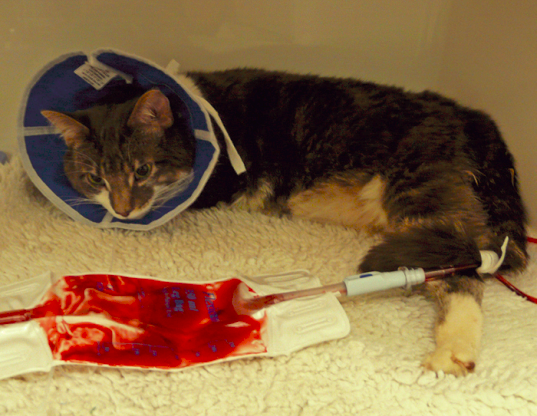Blocked Cats (Feline Urethral Obstruction)
What is a blocked cat?
The term ‘Blocked cat’ describes a physical obstruction of the cat’s urethra resulting in the inability for successfully urination. This painful condition falls under a wider group of feline abnormalities known as Feline Lower Urinary Tract Disease, and usually come in the form of mucoid plugs or urinary crystals. Interestingly, this condition is more common in male cats due to their long and narrow urethra! Furthermore, studies have also shown that urethral blockage occur more often in cats that live indoors and in multi-cat households, suggesting that stress might be a key contributor.
If left untreated, blocked cats are a medical emergency. When urine is unable to be excreted, significant tension is placed on the bladder as it continues to strain and stretch in its attempt to contain an increasing amount of urine. When this happens, the bladder wall may rupture internally resulting in leakage of urine in the abdominal cavity. This can most certainly be fatal. Other complications that can happen include severe electrolyte imbalances and life-threatening cardiovascular problems.
Signs to look out for
- Straining to urinate at litter box
- Dripping of urine
- Lethargy
- Loss of appetite
- Loud meowing indicating pain
If any of the signs above are noted and urethral obstruction is suspected, do bring your pet to the vet immediately.

Diagnosis
After initial stabilisation, your veterinarian will likely perform an X-ray imaging, physical palpation and possibly an ultrasonographic study to assess the size and state of the urinary bladder. Furthermore, urine and blood tests may also be helpful to determine if any other medications are required.
Treatment and Prevention
The physical obstruction in the urethra should be cleared by inserting a urinary catheter (a thin blunt-ended tube). This allows urine to resume egress by flowing out of the now unobstructed urethra, thus greatly relieving pressure from the bladder. This catheter can then be left in the cat for a couple of days to ensure patency and to allow the urethra to recover in the meantime. Pain-relief medications will also be administered to prevent reduce discomfort.
Environmental changes are also highly recommended and studies have shown that decreasing stress levels at home can reduce the rate of recurrence drastically.




Let us take care of your pets
Schedule an appointment now and we will be happy to give your pet the care that they truly deserve.
Let us take care of your pets
Schedule an appointment now and we will be happy to give your pet the care that they truly deserve.
AVH Animal Ark is a state-of-the-art animal clinic with staff that are experienced in a diverse range of companion animal conditions and treatments.
AVH Animal Ark is a wholly-owned subsidiary of
Asia Vets Holdings Ltd.
which has been listed on SGX-Catalist since July 2010.
Opening Hours
- Mon - Sun
- - -
Opening Hours
- Mon - Sun
- - -
AVH Animal Ark Veterinary Group. All Rights Reserved. Website Designed by Heroes of Digital. Privacy Policy

